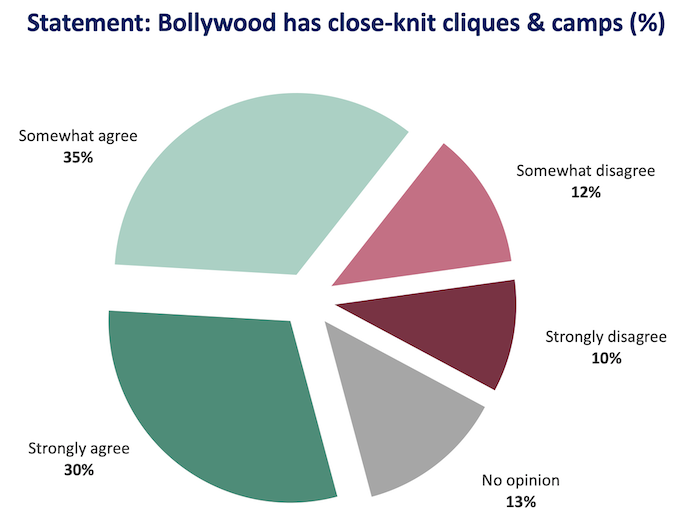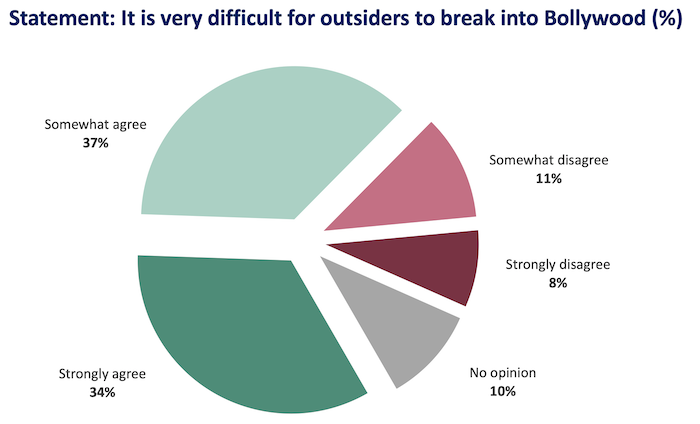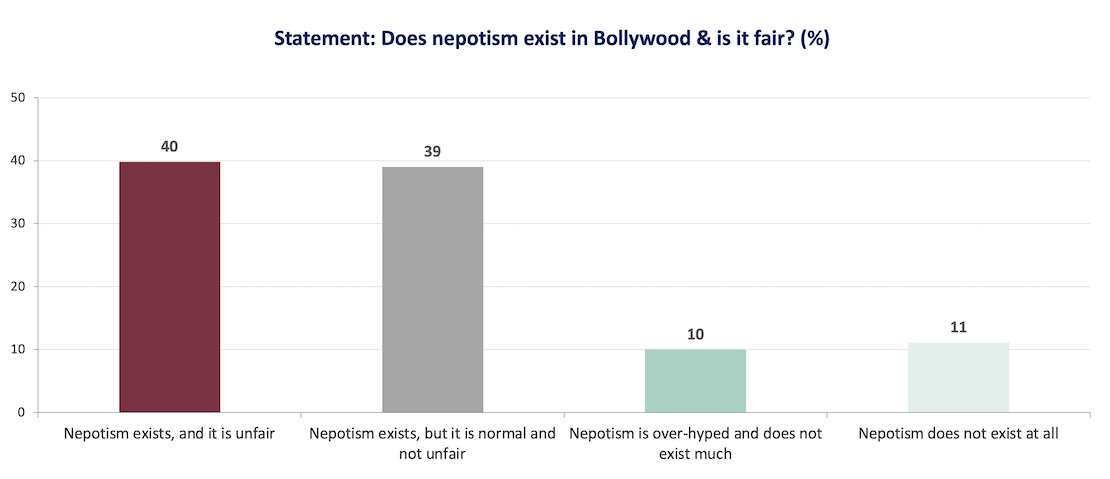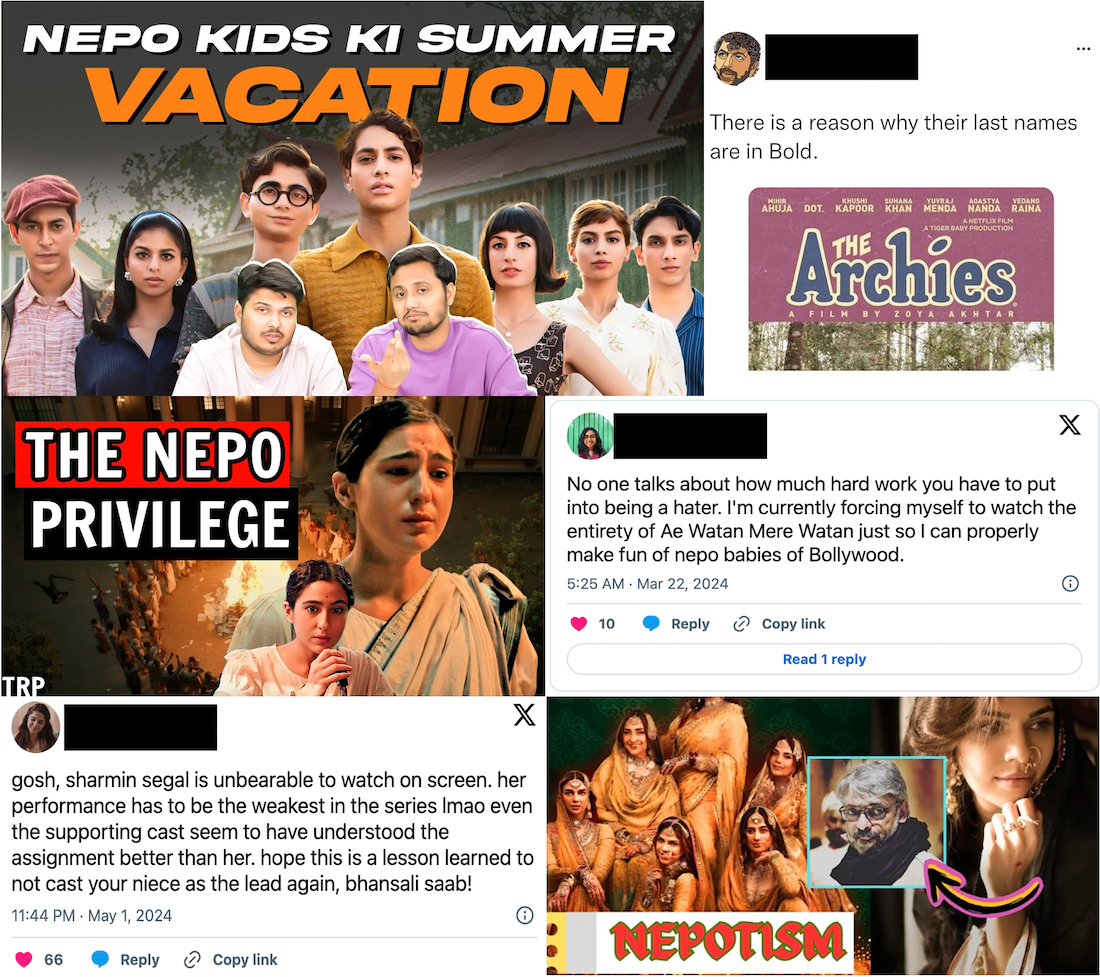


By Swayam Kumar
The word nepotism originated from the Italian word 'nepotismo', which historically described the favoritism shown by Catholic popes and bishops towards their nephews ('nipoti' in Italian). Today, however, this word extends far beyond its historical context, permeating various industries, including the illustrious and influential world of Bollywood.
Bollywood’s relationship with nepotism has been a complex one, to say the least. Beneath all its glitz and glamour, a persistent heated debate on the rise of nepotism has prevailed, with the growing presence of second and third generations of film families in the industry in the last two decades. This began to spark a widespread debate among filmgoers and the wider public, where concerns around the industry’s meritocracy, and equal opportunity (or the lack of it) for newcomers took center-stage. During the pandemic, Bollywood was at the receiving end of immense media pressure and debate, and nepotism was central to this damaging narrative.
Based on the recency of conversations around Bollywood, and some generally-associated perceptions towards the industry, we recently conducted an audience research, titled The Bollywood Image Report 2024, to understand how Bollywood is currently being perceived among the Hindi film-going audience, on various image dimensions around which the popular narrative on social and traditional media has unfolded in recent years. A section of the report focuses on nepotism, and the audience perceptions related to it.
Hindi theatre-going audiences were asked their perceptions on three statements related to nepotism. Their responses are captured in the charts below:

When asked about the existence of smaller in-groups that only encourage people close to them, 65% audience agreed with this statement, highlighting the audience’s solidified perceptions of Bollywood being closed and nepotistic.

71% audience agree that Bollywood is a family-supported industry for upcoming talent, making it a tough place for new talent to break out. This reiterates that the audience perceives that Bollywood's closely-knitted networks pose hindrances for outsiders to enter the industry. However, this perception could simply be a perception of limited demand against ample supply. The third statement, phrased as a question with four options, thus becomes important, to understand what audiences think of nepotism, in context of Bollywood.

While 40% audience believe nepotism is unfair for outsiders, an almost equal part consider it as a normalized aspect of the industry. In other words, while 79% audience believe nepotism exists in Bollywood, only half of them see it as an issue of fairness. But in times of excessive media clutter, any perception that make you lose even 10% of your potential audience is a marketing challenge to consider.
In the current era of social media and instant feedback, just the acknowledgement of nepotism’s presence is not enough. Today, online commentary can drive perceptions of a content property well in advance. It is typical for high-profile, star-studded projects to face excessive scrutiny, and an arguably unreasonable barrage of negative word-of-mouth upon their release. The negative perceptions have a tendency to further intensify if “nepokids” are cast members of the properties, as seen with some properties launched on streaming in the recent past, such as The Archies, Ae Watan Mere Watan, and Heeramandi.

This “nepokids” narrative is not new to the industry, and has occurred in the past for the theatrical medium with the launch of several current Bollywood actors. However, the scale of today’s nepotistic narrative on social media platforms is far wider. This ongoing commentary around big-ticket streaming releases raises some important questions: Is this narrative a reason for some audiences to not watch such properties at all? And if they do watch it, is there a high chance that they would be pre-disposed to like them less? While the answer to these questions would vary for each property, a clear trickle-down of nepotism’s impact on social media can be observed, inevitably targeting not only the content of properties, but also the talent involved in them.
This is a cause for alarm for creators, studios and streamers alike. There could be a real negative impact on the marketing and promotional campaigns of such properties due to the social media frenzy, and negatively impact the potential viewership and likeability of the properties, as well. Therefore, this recent trend requires careful handling of these negative social media perceptions, by pre-empting such challenges, and countering them through consciously-designed components in the property's marketing & PR plan.
If you want to read the full report, you can email us at [email protected].

Ormax Cinematix's FBO: Accuracy update (November 2025)
This edition of our monthly blog summarises Ormax Cinematix's box office forecasts (FBO) for all major November 2025 releases vis-à-vis their actual box-office openings

From CTV to Micro Dramas: India's fascinating OTT spectrum
The simultaneous rise of Connected TV and Micro Drama audiences in India over the last year highlights how the Indian OTT market is expanding at both the premium and the mass ends simultaneously

Product update: Content testing for the horror genre
Based on our accumulated audience insights, we are introducing genre-specific drivers for horror films and series in our content testing tools, Ormax Moviescope and Ormax Stream Test
Subscribe to stay updated with our latest insights
We use cookies to improve your experience on this site. To find out more, read our Privacy Policy